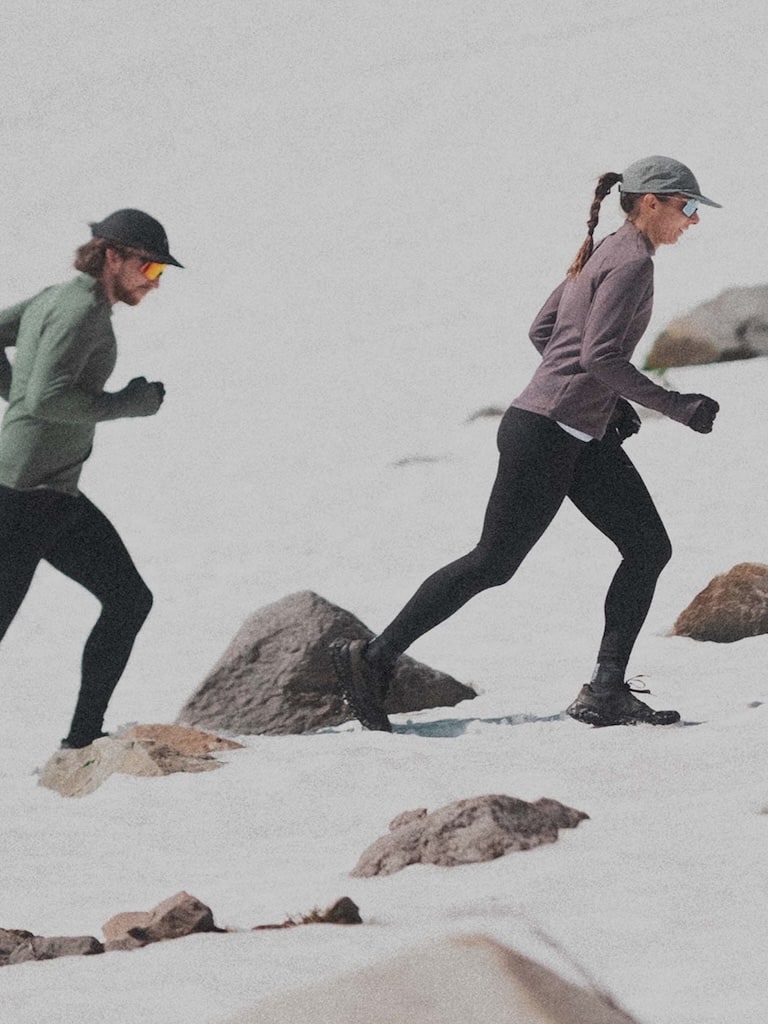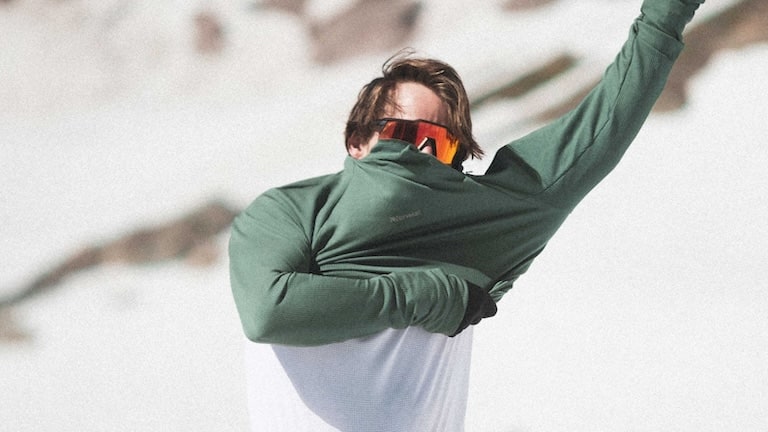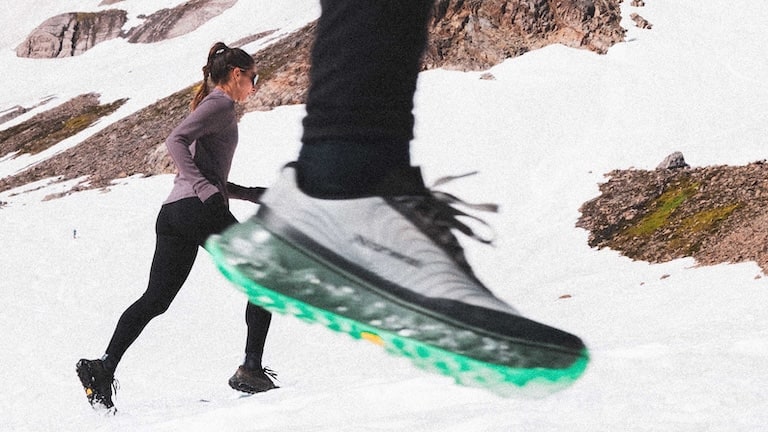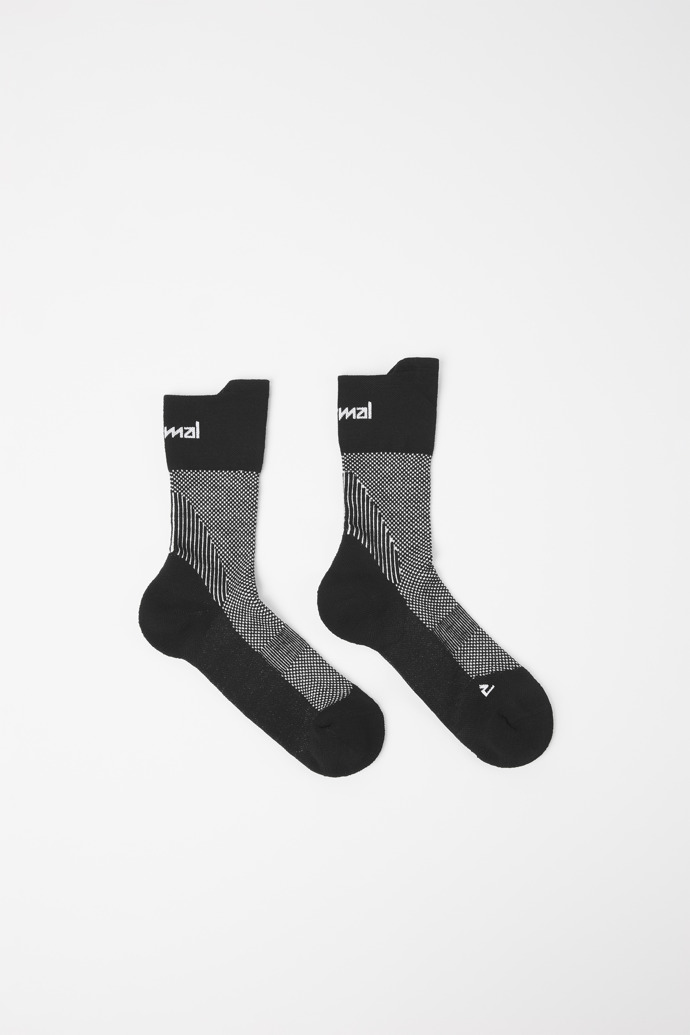
Tips for winter training: A guide to outdoor sports

Winter poses some unique challenges for outdoor sports lovers: freezing temperatures, slippery trails, shorter daylight hours, and limited time to get outside. But just because winter's here doesn't mean you have to give up your favorite outdoor activities. With the right preparation, you can not only keep training but also take in the stunning winter scenery that only this time of year can offer. In this guide from NNormal, we’ve put together some tips to help you stay active and safe while training during the winter.

Dress appropriately: Think in layers
One of the biggest challenges of winter training is dealing with the cold. The most effective solution is layering, which allows you to regulate body temperature and protect yourself from wind and moisture. Here’s how to dress efficiently:
Base layer: Opt for a moisture-wicking base layer like Merino wool shirts or high-performance technical fabrics. These materials help keep you dry and prevent sweat from cooling your body during lower-intensity periods. Our Merino wool shirts make an excellent choice for a reliable base layer.
Mid layer: This layer provides insulation. Opt for something that traps body heat, like a fleece or lightweight down jacket. We recommend the NNormal Active Warm Jacket.
Outer layer: The final layer should protect you from wind, rain, or snow. Jackets with waterproof and breathable membranes, such as GORE-TEX, are ideal for winter conditions. The Trail Rain Jacket is designed for trail running, offering features to maximize mobility and comfort, allowing you to tackle challenging terrain with ease and safety. The NNormal trail rain jacket is more than just weather protection; it's a companion designed to enhance your trail running adventures.
Keep in mind that as you begin exercising, your body will naturally generate heat. To avoid overheating, it's best not to overdress at the start. Wearing too many layers can lead to discomfort, and a higher risk of dehydration, and can ultimately impact your performance outdoors.

Warm up properly
In winter, the cold can make muscles stiffer, increasing the risk of injury. That’s why it’s crucial to warm up properly before any outdoor activity. Spend 10-15 minutes doing mobility exercises and dynamic stretches to boost circulation and get your joints and muscles ready.
A good warm-up not only prepares you physically but also helps you get into the right mindset to tackle winter’s challenges, ensuring you start your workout with the necessary warmth.
Plan your route and training time carefully
In winter, days are shorter, and weather conditions can change quickly, making it essential to plan your routes and schedules carefully. Here are some key points to consider:
Choose familiar routes: In winter, it's best to stick to familiar routes, as snow or ice can make trails harder to navigate. Knowing the path well helps you steer clear of difficult or hazardous areas, making your outdoor activities safer and more manageable.
Check the weather: Always check the weather conditions before heading out to avoid unpleasant surprises. If heavy snowfall or strong winds are forecasted, postpone training or change locations.
Train during the day: Plan your outdoor activities for daylight hours to avoid the colder temperatures at night and minimize the risk of getting lost. Daylight not only keeps you warmer but also makes navigation easier and safer.
Carry safety devices: If you train in remote or mountainous areas, bring a mobile phone, and GPS, and, if possible, inform someone of your route.
Nutrition and hydration in winter
Cold weather can make you feel less thirsty, but it's still essential to stay hydrated during training. Even if you’re not sweating as much as in summer, your body continues to lose fluids, particularly at higher altitudes or in very cold conditions.
Carry water: Use bottles or hydration packs with thermal insulation to prevent water from freezing.
Eat energy-rich foods: During winter, your body burns more energy to keep warm, making it important to fuel up with snacks that are rich in carbohydrates and healthy fats during long training sessions. Convenient options include energy bars, nuts, or sports gels.
Hot drinks: If you can, carry a thermos with a hot drink like tea or broth. It will not only help keep you hydrated but also provide extra warmth and a boost of energy during your training.

Take care of your skin and eyes
Cold, wind, and sun exposure can take a toll on your skin and eyes during winter training. Even in colder months, UV rays remain strong, particularly in the mountains, where snow reflects sunlight and intensifies its impact. That’s why it’s important to take steps to protect your skin and eyes:
Sunscreen: Apply waterproof sunscreen to exposed areas like your face and neck to protect against UV rays. Additionally, use a lip balm with UV protection to keep your lips from becoming chapped.
Sunglasses: Sunglasses not only shield your eyes from the sun but also protect against wind and snow, which can cause irritation.
Skin hydration: Apply moisturizer to areas exposed to the cold to prevent dryness and cracking.
Specialized winter gear
In addition to clothing, having the right gear is essential for winter training. Here are some key recommendations:
Footwear with good grip: For snowy or icy terrain, trail shoes with grippy soles are essential to maintain stability. You can also attach lightweight crampons to your shoes for extra traction on slippery surfaces.
Thermal accessories: Gloves, hats, and thermal socks are crucial for keeping your extremities warm and preventing heat loss. Additionally, a neck gaiter or buff can help cover your face and shield against the wind.
Headlamp or flashlight: If you’re training at dawn, dusk, or in low-visibility areas, always bring a headlamp to illuminate your path. Ensure it has a reliable battery that can withstand low temperatures, as the cold can cause batteries to drain more quickly.
Listen to your body and adapt your training
Winter isn’t the ideal time to aim for personal bests. Rather than pushing yourself too hard, it’s crucial to listen to your body's signals. If you start feeling extremely cold, exhausted or show signs of hypothermia—like intense shivering, confusion, or extreme fatigue—stop right away and find warmth or shelter. Here are some key adjustments to keep in mind:
Slow down: The terrain (such as snow or ice) may force you to run slower. Don’t worry about your pace; focus on maintaining proper technique.
Strengthen your base: Use the winter to work on your basic strength and endurance. You can do indoor strength training or shorter, high-intensity outdoor sessions to stay in shape without exposing yourself too much to the cold.
Train during the day: Plan your outdoor activities for daylight hours to avoid the colder temperatures at night and minimize the risk of getting lost. Daylight not only keeps you warmer but also makes navigation easier and safer.
Training in winter presents its challenges, but with the right preparation, it's a great opportunity to maintain your fitness and enjoy the beauty of winter landscapes. The key is proper preparation: dress in layers, warm up thoroughly, choose familiar routes, stay hydrated, and use the right gear. Follow these tips, and you can keep up with outdoor training even in the harshest conditions. Don’t let winter hold you back!
Photography: Nick Danielson
Share with a friend

Attenzione: le scarpe NNormal ti danno diritto a un regalo!
1. Aggiungi al tuo carrello il paio di scarpe NNormal Tomir (Tomir 01, Tomir 02, Tomir WP) o NNormal Kjerag 01 che preferisci. 2. Quando ti appresti a concludere l’ordine copia il seguente codice nella casella “Promotional code” che ti appare nel carrello: FREESOCKS24. 3. Le calze verranno automaticamente aggiunte al carrello. 4. Concludi l’acquisto.